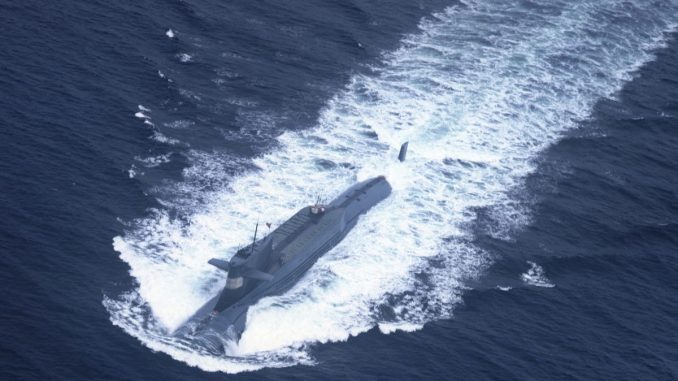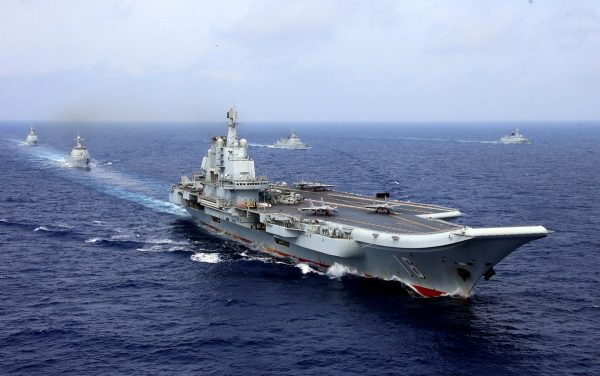
Commentary
There used to be a saying about the People’s Liberation Army (PLA), popular in the 1990s, that “it’s come a long ways, but it still has a long ways to go.”
Putting the “it still has a long way to go” second basically belittled or dismissed whatever progress the PLA had made up until that point. Perhaps this statement was valid at the time, but it has not been true for quite a while now.
Up until the early 2000s, it was commonplace to speak of Chinese military capabilities in terms of “pockets of excellence.” Some sectors of the Chinese defense industry were considered to be relatively good, such as ballistic missiles, anti-ship cruise missiles, and nuclear weapons.
The rest of China’s defense products were pretty awful. The mainstays of the PLA Air Force during the 1990s and early 2000s were either Soviet-derived combat aircraft developed in the 1950s (such as the J-7/MiG-21) or domestic fighters that were obsolete before they entered service (such as the J-8II).
Moreover, Chinese-made weapons were notorious for their low quality, with tanks that belched smoke and oil, frigates lacking air-tight seals between bulkheads, and fighter jets with coarse riveting and rough lap joints.
In fact, until around 15 years ago, the best equipment in the PLA was foreign, mostly Russian or Israeli. These included Russian fighter jets and airborne early warning aircraft, and Israeli-built air-to-air missiles.
Flash forward to the 2010s and 2020s, and it is little short of amazing just how far China has come in making vastly improved weapons systems. This progress was demonstrated in a recent publicity stunt, when in late April, the PLA Navy (PLAN) simultaneously commissioned three warships: a Type-075 (Yushen-class) helicopter carrier, a Type-055 (Renhai-class) guided-missile cruiser, and a Type-94 (Jin-class) nuclear-powered ballistic missile submarine.
Each of these commissioned ships demonstrates a growing capacity on the part of the PLAN, namely, in amphibious warfare, surface warfare force-projection, and sea-based nuclear deterrence.
The Type-075 helicopter carrier, the Hainan, is the first in a series of large, flat-deck assault vessels never before operated by the PLAN. These ships can carry up to 28 helicopters and 1,200 troops, providing the PLA with a significant expansion in its amphibious expeditionary capabilities. At least three Type-075 vessels have been built so far, and the PLAN is expected to acquire a total of eight ships in this class.
The Dalian is the third Type-055 guided-missile cruiser to be commissioned so far. The Type-055 is huge: at 180 meters long and displacing 13,000 tons, it is larger than the U.S. Navy’s Ticonderoga-class cruiser or Arleigh Burke-class destroyer. It boasts 112 vertical-launch system (VLS) tubes capable of firing a variety of anti-air, anti-ship, and land-attack missiles, compared to just 64 VLS cells on the PLAN’s Type-052D destroyer (and 96 VLS cells on the latest Arleigh Burke destroyer).
Up to 16 Type-55 cruisers are planned, and together with the more than 65 modern destroyers and frigates also being added to the PLAN—as well as two (soon to be three) aircraft carriers—China will soon possess an impressive capacity for projecting sustainable seapower far into the Pacific and Indian oceans.

The PLAN’s growing surface fleet is greatly expanding China’s military footprint, perhaps eventually into the Atlantic Ocean. China is, bit by bit, becoming a globe-straddling blue-water naval power.
Finally, with the launch of another Type-94 nuclear-powered ballistic missile submarine (SSBN), China is cementing its sea-based nuclear strike force. For decades, the PLAN operated just a single Xia-class SSBN. The Xia was noisy and unreliable, however, and it was equipped with a mediocre submarine-launched ballistic missile (SLBM), the JL-1, which lacked a long-range strike capability. Reportedly, the Xia made only a single deterrence patrol in its 40-year history.
With the Type-094, however, China has finally acquired a reliable sea-based nuclear deterrent. Each Type-094 is armed with a dozen 7,400-kilometer-range JL-2 SLBMs capable of carrying anywhere from one to eight warheads each.
At least six Type-094 SSBNs have been launched, and Western observers expect the PLAN to eventually acquire 12 SSBNs in all.
The Type-094 provides China with a fully functioning nuclear triad–a trio of ground-based intercontinental ballistic missiles (ICBMs), long-range bombers, and SLBM-equipped SSBNs. As China continues to build more and better strategic weapons—including nuclear-armed cruise missiles and multiple independently targetable (MIRVed) warheads—Beijing’s nuclear force is growing in its potential capabilities.
In particular, possessing so many nuclear weapons is starting to look like China desires a “first-strike” capability. If so, this would constitute a significant departure from Beijing’s long-standing policy of “minimum deterrence.”
This incidence of commissioning multiple PLAN ships on a single day is unusual, but it has been matched by similar successes in other parts of the Chinese arms industry, including fighter jets, surface-to-air missiles, cruise missiles, armed drones, satellites, and the like. It is not simply that the Chinese have achieved noticeable improvements in the capabilities and quality of their homegrown weaponry, it is how quickly this is has happened, especially given the relatively backward state of the local defense industrial base not too long ago.
Overall, the PLA’s remarkable progress in modernizing its inventories is impressive, and—depending on your perspective—a frightening one, as well. The PLA has clearly moved away from being a military lucky to possess a few isolated, “pockets of excellence.” China has achieved significant breakthroughs in such critical areas as force projection and precision strike, and it is well on its way toward realizing its long-range goal of “intelligentized warfare.” The PLA has come a long way, indeed.
Richard A. Bitzinger is an independent international security analyst. He was previously a senior fellow with the Military Transformations Program at the S. Rajaratnam School of International Studies (RSIS) in Singapore, and he has held jobs in the U.S. government and at various think tanks. His research focuses on security and defense issues relating to the Asia-Pacific region, including the rise of China as a military power, and military modernization and arms proliferation in the region.
Views expressed in this article are the opinions of the author and do not necessarily reflect the views of The Epoch Times.





Be the first to comment